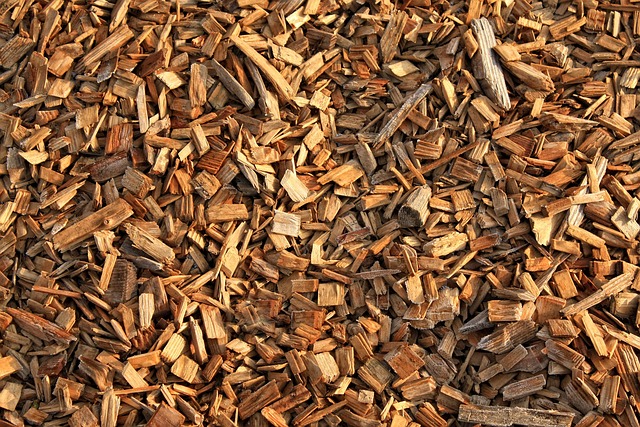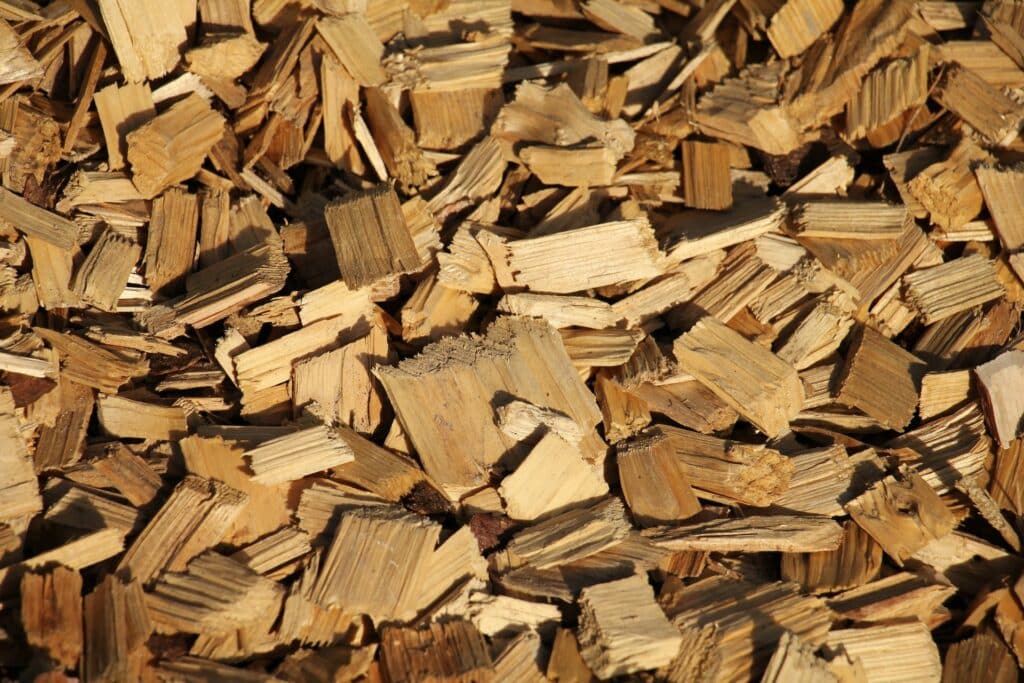Introduction – Wood Chip Bioreactors Treat Agricultural Run-Off
In the field of agriculture, wood chip bioreactors are used to treat run-off. It is a type of system that utilizes wood chips or wood-based products to provide a reactive surface area for bacteria and their host. This bioreactor provides many advantages, including an increased surface area for bacterial degradation, improved nutrient availability, and an ideal environment for biological growth.
The wood chips in the bioreactor can also play a key role in controlling water chemistry. These wood chips can react with various dissolved compounds to remove toxic elements or reduce alkalinity. In addition, wood chip bioreactors may also be used to filter out sediment or other floating particles before they can enter into neighboring water resources.

Woodchip Bioreactors Are Used In Agricultural Settings And Are Up to 500 Sq Ft
These things are not small! Woodchip bioreactors are most commonly used in agricultural settings, such as farms and orchards, to improve the quality of wastewater runoff. They are also used to treat runoff from urban areas, such as parking lots, streets, and rooftops.
They typically range in size from 10 to 500 square feet. The size of the bioreactor depends on the amount of wastewater that needs to be treated and the area in which it will be installed.
How Does It Work?
Wood chip bioreactors are an incredibly environmentally friendly and efficient treatment method. The wood chips provide a perfect home for microbial organisms, which feed on coliforms, nitrates, ammonia, organics, and phosphate in the water.
The wood chips act as tiny filters in the system, trapping debris particles within its wood fibres. As the microbes break down these pollutants, they create air between each wood chip layer, improving oxygenation within the system. Since wood chips float, water can pass through them rather than around them, resulting in faster treatment times than conventional systems.
This technology also requires less energy than traditional methods and generally produces higher-quality wastewater that can be used in reuse applications such as agricultural irrigation without additional sand filtration. Overall, wood chip bioreactors are an economical way to effectively treat large volumes of wastewater while being ecologically sensitive.
Benefits Of Using A Wood Chip Bioreactor
Using a wood chip bioreactor benefits both water management systems and the environment. This type of bioreactor is designed to capture and break down pollutants, allowing for greater water quality throughout a system.
Benefits of using this technology include:
- Increased infiltration.
- Enhanced phosphorus removal.
- Improved retention/detention time.
- Increased depth of treatment.
- Reduced dissolved solids concentrations.
- Denitrification when nitrogen loading is decreased.
- A decrease in oxygen demand with the incorporation of anaerobic zones.
Enhanced sedimentation capabilities contribute to improved water clarity over untreated basins. Additionally, woodchips can provide habitat diversity, which can benefit aquatic systems looking to support bioactivity.
By providing additional functional channels for organisms contained within substrate chambers, wood chip bioreactors can increase the percent removal rate of pollutants and organics matter over compared techniques like nutrient sorption, thus increasing the efficiency and effectiveness when it comes to managing stormwater flows.
Types of Wood Chips Used in Bioreactors
Types of wood chips used in bioreactors vary greatly dependent on the desired end goal. From hardwood to softwood to even tropical woods from ecosystems as far ranging as boreal, it is important to understand which type of wood chip best suits each specific application. Hardwoods such as oak, maple, and birch are convenient choices but often require a significant investment due to cost.
Softwoods such as pine, hemlock, and spruce are more economical and offer advantages when used in low-temperature processing applications. Tropical woods, such as various mahogany kinds of wood, can be beneficial when flood water or groundwater remediation is required. You should note that regardless of variety, all wood chips must lack toxins, chemicals, or additives to yield successful results from a bioreactor application.

Types of Wood Chips Used in Bioreactors depend largely on the intended use for the bioreactor itself; understanding what each type of forest system brings to the table offers an informed choice for applications of all types.
Applications
Applications for wood chip bioreactors have become increasingly popular in recent years due to the many benefits they bring. Primarily, wood chip bioreactors can reduce nutrient and sediment runoff from agricultural and urban sources, which can cause water pollution.
Additionally, wood chip bioreactors can reduce nitrate levels, control stormwater runoff, and erosion, and improve water clarity. These organic materials can intercept and absorb excess nutrients in the soil and sediment that would otherwise enter nearby waterways by placing the wood chips in or near drains on farms or urban landscapes.
Furthermore, they act as a buffer against stormwater runoff while providing other beneficial services associated with improving soil health, such as providing a habitat for beneficial insects that can help control pests within an agricultural environment.
Applications for wood chip bioreactors have proven reliable when implemented properly, making them incredibly useful resources for preventing water pollution and improving environmental sustainability.
Advantages And Disadvantages Of Using A Wood Chip Bioreactor
Using wood chip bioreactors in wastewater treatment facilities offers several advantages and effectively cleans up large bodies of water. One of the most significant benefits is cost-effectiveness; wood chips are inexpensive, and wood chip bioreactors require minimal ongoing maintenance once established.
This also makes wood chip bioreactors faster to install than other advanced wastewater treatments, allowing facilities to reap benefits from their investment sooner. Furthermore, wood chips can be applied in layering configurations and provide a thread count in high concentrations that allow for an increased amount of aerobic organisms to colonize quickly – thereby accelerating the process and making it more efficient than some alternative techniques.
The wood chip bioreactor can break down complex pollutants, naturally eliminating pollutants like nitrogen oxides and phosphates before they reach receiving waters. The wood chips provide an ideal habitat for microbial populations that convert nutrients into biomass more efficiently than phosphorus-limited systems alone.
On the downside, wood chips may clog filters, reduce water column movement, and decrease oxygen levels if not closely monitored – requiring periodic removal or cleaning depending on maintenance schedules determined by facility operators. In conclusion, wood chip bioreactors are reliable options for wastewater treatment when adequately managed to achieve satisfactory results.
Tips for Choosing the Right Type of Wood Chips for Your Project
Choosing the right wood chips for your project is important to ensure that you have the optimum bioreactor performance. There are key considerations when selecting wood chips, including particle size, wood species, and wood chip nutrients.
Particle size may be an important factor—too large a particle could lead to reduced contact between the wood chips and wastewater, while too small a particle would limit air diffusion through the wood chips. Wood species also play a role in bioreactor function—it’s best to choose wood with rot-resistant qualities for its long-term durability.
Additionally, you should also consider wood chip nutrition; wood rich in nitrogen can promote high rates of microbial activity and optimize bioreactor removal efficiency. By considering these key factors when selecting wood chips for your project, you will ensure that you have the best wood chip bioreactor results!
Wrapping Up
In conclusion, wood chip bioreactors are an effective and economical method for treating wastewater. They provide numerous benefits to both water management systems and the environment. Their ability to trap debris particles within their wood fibres makes them a great choice for filtering out sediment or other floating particles before they can enter into neighboring water resources.
